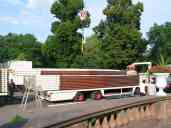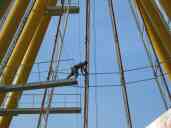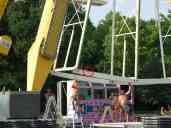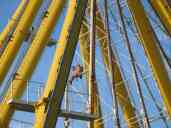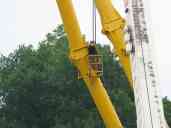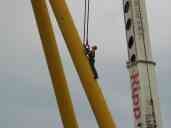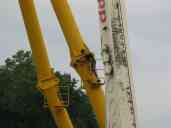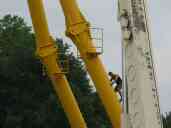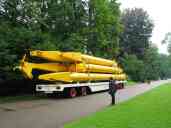As I mentioned previously, there was a giant Ferris wheel behind the palace when we arrived. The last day it was there, we took a second ride. As it turned out, we got an extra-long ride, because the car in front of us had a couple of good-looking young women in it. One of the workers spotted them hopped in the next time around (while the wheel was turning!), and then got a friend to join them. Then we got to keep going while they chatted the girls up and tried to get a date.
When we got off, I asked whether they would take the wheel down that night, or wait until the morning. The guy didn't understand at first, which in 20-20 hindsight is understandable. They'd have to be nuts to take it down at night, and besides, it's a two-day job.
On the way home from the office on Monday, I looked over at the palace and saw that only a quarter of the wheel was sticking up. So I suggested that we go over and watch for a while. Pat and Xandie were game. We stayed until 8 PM, watching and photographing what can only be described as an amazing operation. Xandie got a bit bored after a while and found another little girl to play with. I really wanted to hang around and see how they took down the main supports, but hunger overcame us.
After dinner, Xandie and I went back for a quick look and found that they had knocked off for the night. That gave us a chance to look at things a bit more closely and learn that it was indeed water-ballasted.
On Tuesday I asked if anybody wanted to take another look before lunch and errands. Xandie, who is always up for an outing (even if it's only to the stinky dumpster), said "Sure!". So went over in the rain. Our timing was perfect, because they were just repositioning the crane to take down the last of the support structure. Again, I got a lot of shots.
This Ferris wheel travels all over Europe, hitting major carnivals everywhere. It takes something like 18 trucks to carry it. We hope to ride it again in the fall, when it will be at Oktoberfest in Munich.
|
Pictures from Day Two: | |||



